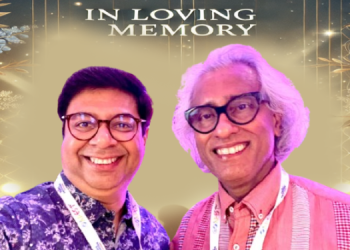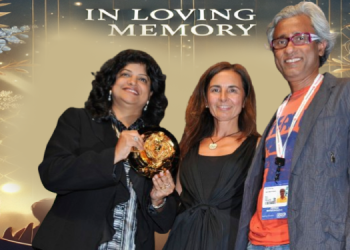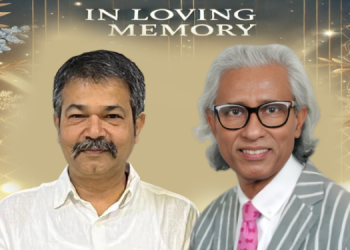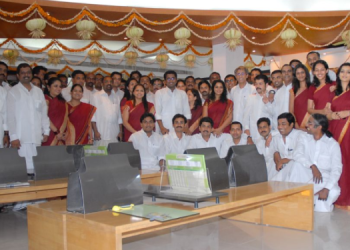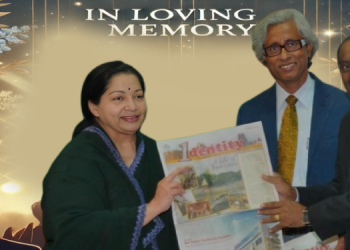There was a time in the golden era of advertising during the late last century (1975-1995) when high ranking management graduates straight from leading management institutes like the IIMs, XLRI used to queue up at campus interviews to join the advertising agency profession and make a mark in the industry. Some of the CEOs of leading ad agencies in the first two decades of the twenty-first century were actually from these premier institutes who had left lasting impact on the industry as well as the agencies they headed.
How could agencies afford these management graduates who came at 50%+ premium over normal entries in the profession? The answer is simple: in those days agencies worked on 15% commission on conventional media and production and were paid art charges based on rate cards. Media release costs have usually been 80-90% of the clients’ advertising spends and 15% compensation allowed the agencies to generate decent revenues and they could afford to pick up the best talents in the industry. The clients and their brands got far better quality of brand planning and strategies executed by teams led by these intellectually superior marketing driven advertising professionals trained at India’s best institutes.
Compare these with the situation today as a result of depleting agency revenues. From the early part of this century, agency compensation models globally started coming under severe review by advertisers and the first victim was the slashing of the agency commission model. It started sliding down towards a deep gorge from 15% to 10% to 7.5% to 5% and even 2.5%. Over and above this, two other dynamics added to the woes of the agencies. With liberalization from the nineties, global agencies and their subsidiaries started following the big global brands that were entering the Indian market as well as proliferation of Indian agencies through breakaways of senior Indian professionals from MNC agencies as the advertising industry was maturing and somewhat saturating. My founding of BEI Confluence breaking away from McCann Erickson in 1998 is a case in point. With a large crowd of agencies, both international and indigenous, the ‘dog-eat-dog’ phenomena in agency pitches began in full swing, and clients taking full advantage of this in getting many agencies and their pitch ideas as well as in commercial negotiations which in many cases started overtaking the professional considerations.
This was the time when the retainer fee concept was globally introduced for agencies to protect their fixed cost, 50-60% of which was the salary cost as human talent is the only capital on which ad agencies can survive. In such competitive situations agencies often were compelled to accept sub-optimal compensation plans just to get the business and sustain. And quality of human resources became the first victim as agencies started compromising on quality and number of professionals to ensure their bottom-line. This model continues to be still the most acceptable one for creative and social/digital agencies, while the media agencies both in mainline and digital work on a media commission which is also on an ever-sliding mode.
Advertising as a business today is far more complex than it was a few decades back. The re-structuring of the larger MNC agencies into various specialized discipline based independent companies under holding groups have gained momentum and separate creative, media, digital, PR agencies today are the new order. As a result, the 360 offering through a ‘single window’ has now more to do with total services being offered by a Group or a Holding Company rather than one brand of the advertising agency. This being the trend of last 10 years or so, and the start-up agencies in India today are also being built on the platform of specialized skillsets and services, primarily in Digital.
These start-up digital agencies built by advertising techies or tech buffs who may be rank outsiders in advertising, offer deep-tech services along with the basic hygiene like social media are changing the rules of the game in many ways. They are far more experimentative and like to dabble with newer things and being fleet-footed and nimble, having lower overheads and working on a ‘scale-up’ model, they offer a refreshing change from the conventional ad agencies with a Digital Division or even established Digital Agencies that are standalone or independent companies owned by large MNC groups.
To survive in this complex advertising industry, existing and conventional 360 agencies need to re-invent and refresh themselves every few years to stay relevant and ahead of the curve. As tech-driven digital communication is the future of this industry, and agencies must invest in talent and technology to survive and grow. This is particularly applicable for fully independent Indian agencies some of whom are pretty large but lack access to the latest technology, while global agencies have the advantage of T&D, tools, technologies from the international Group HQ.
Such ‘refresh buttons’ can only be pressed by the larger Indian agency groups if they have access to adequate funds for investment and a vision to compete with the large MNC groups. With two Indian agencies in last one year going for IPOs is a sign that Indian agencies are alive to the challenge and are acquiring funds to make investments in tech-based domains to stay ahead and build their own brands of advertising agencies.
While adequate finance is a continuing necessity to stay relevant, however every agency’s core competence lies in the product it creates – the communication idea for its brands and its execution that positively impacts the brand’s life with the consumers. Impactful communication builds The Wow Factor that makes the agency stand apart from its peers and competition. These campaigns with The Wow Factor need to be suitably nurtured in the agency and selectively promoted through winning awards or publishing as case studies to help build the Agency’s equity.
The agency’s professional equity and its robust financial standing is what I call The Worth Factor. While very few agencies can create The Wow Factor through their advertising consistently over a long period, The Worth Factor is a slow, brick by brick building process and while it substantially relies on The Wow Factor of their campaigns to build the agency brand, it also is dependent to a large extent on managing and controlling the business side of the agency on a sustained basis to build a strong organization. Long term agency players have been built that way the world over. Sir Martin Sorrell was at the end of the day a businessman who built a huge advertising empire with an astronomical Worth Factor.



